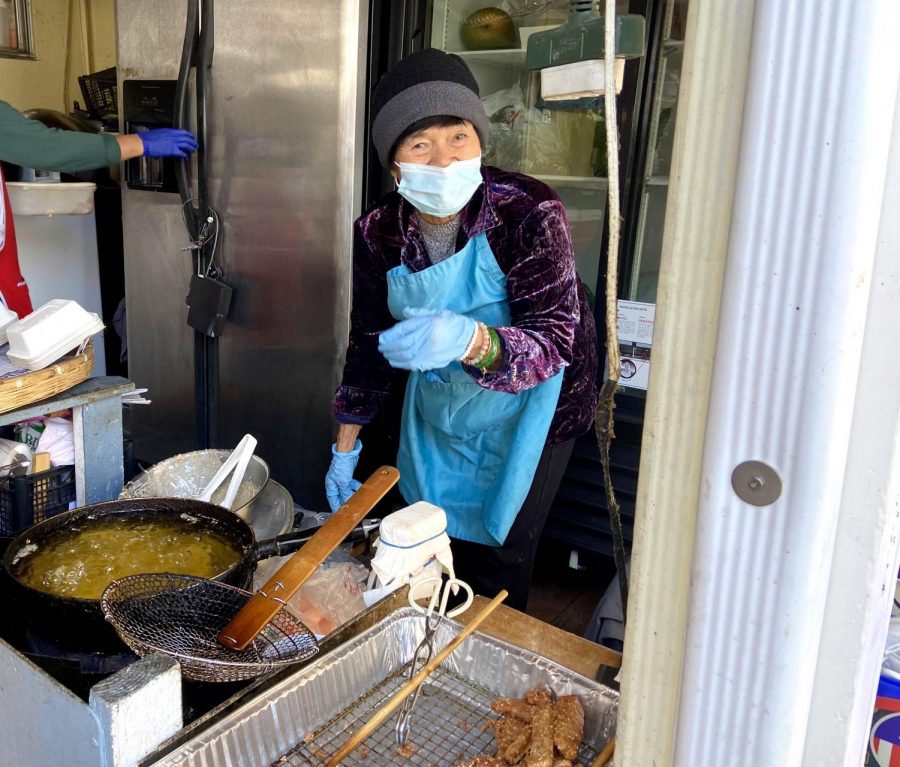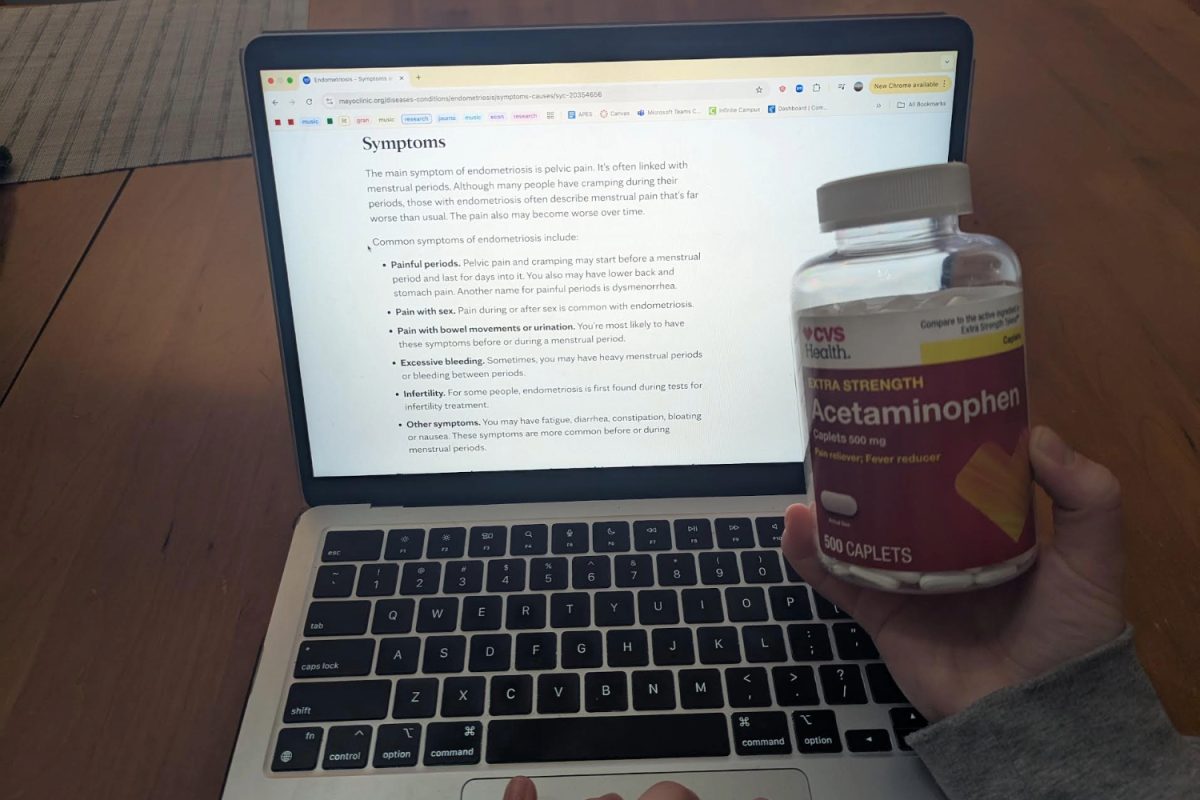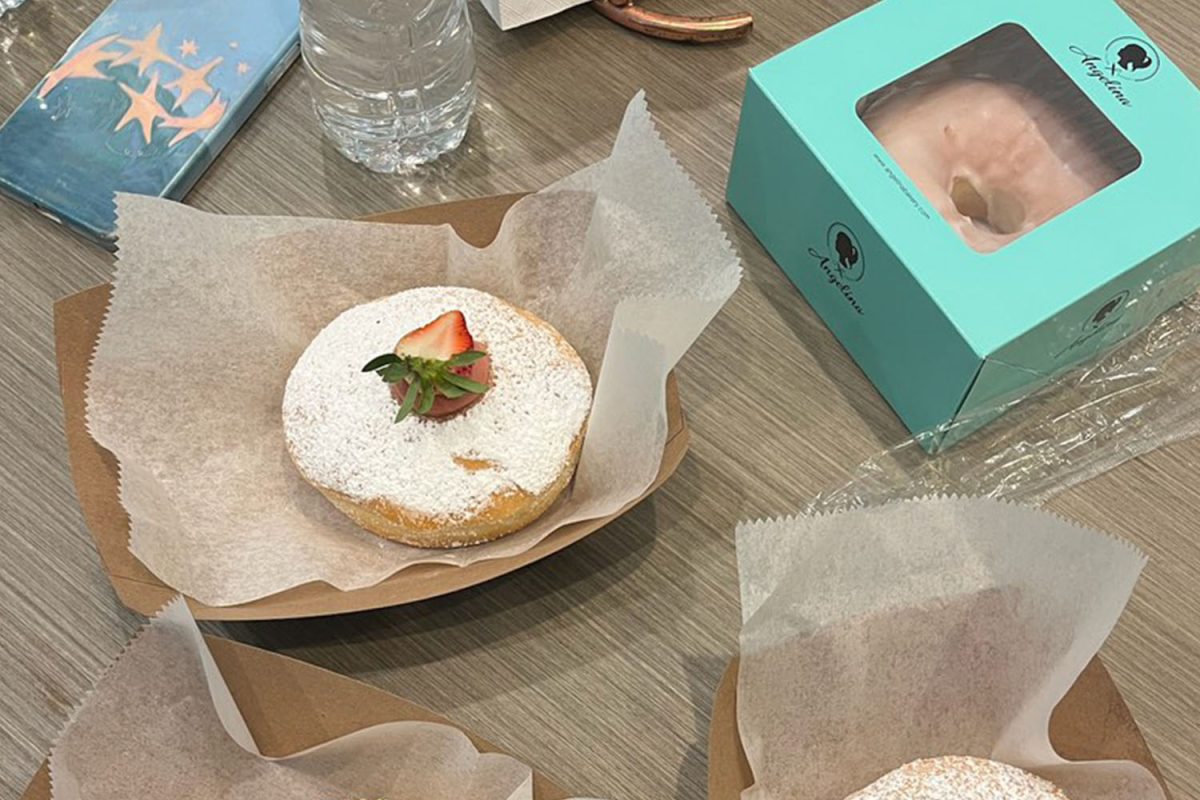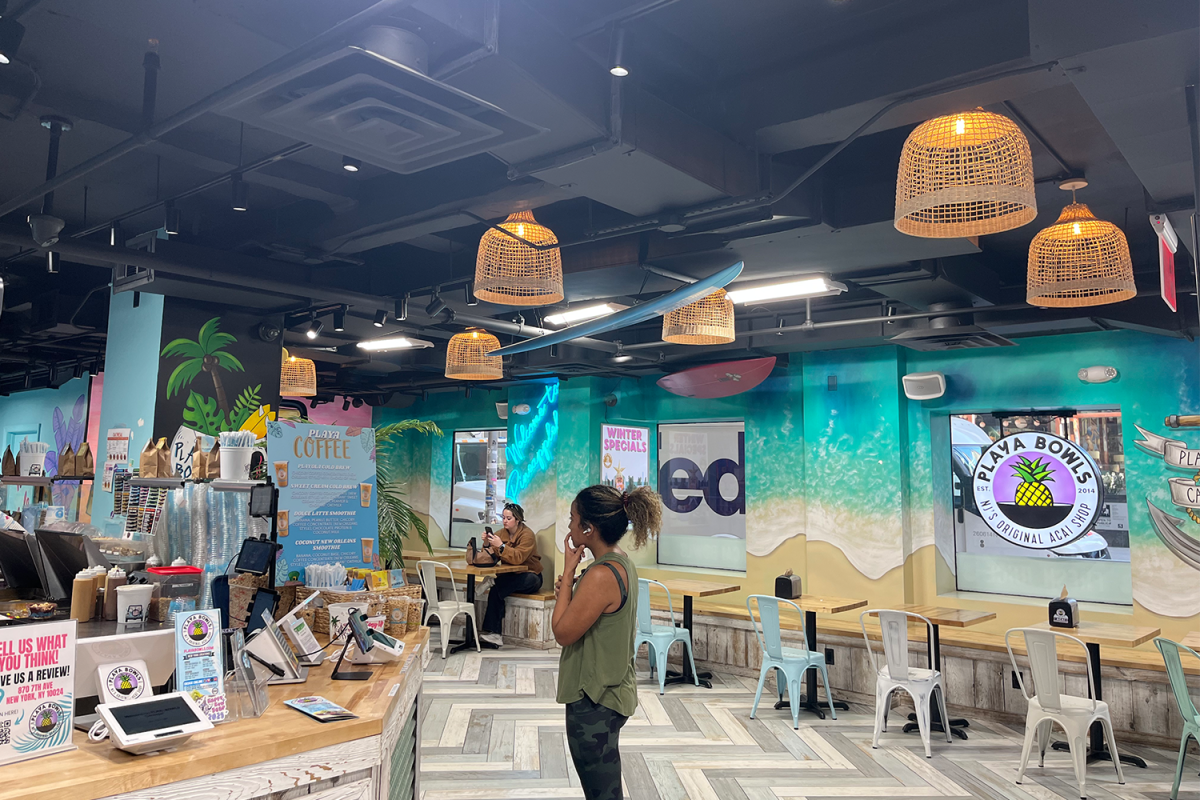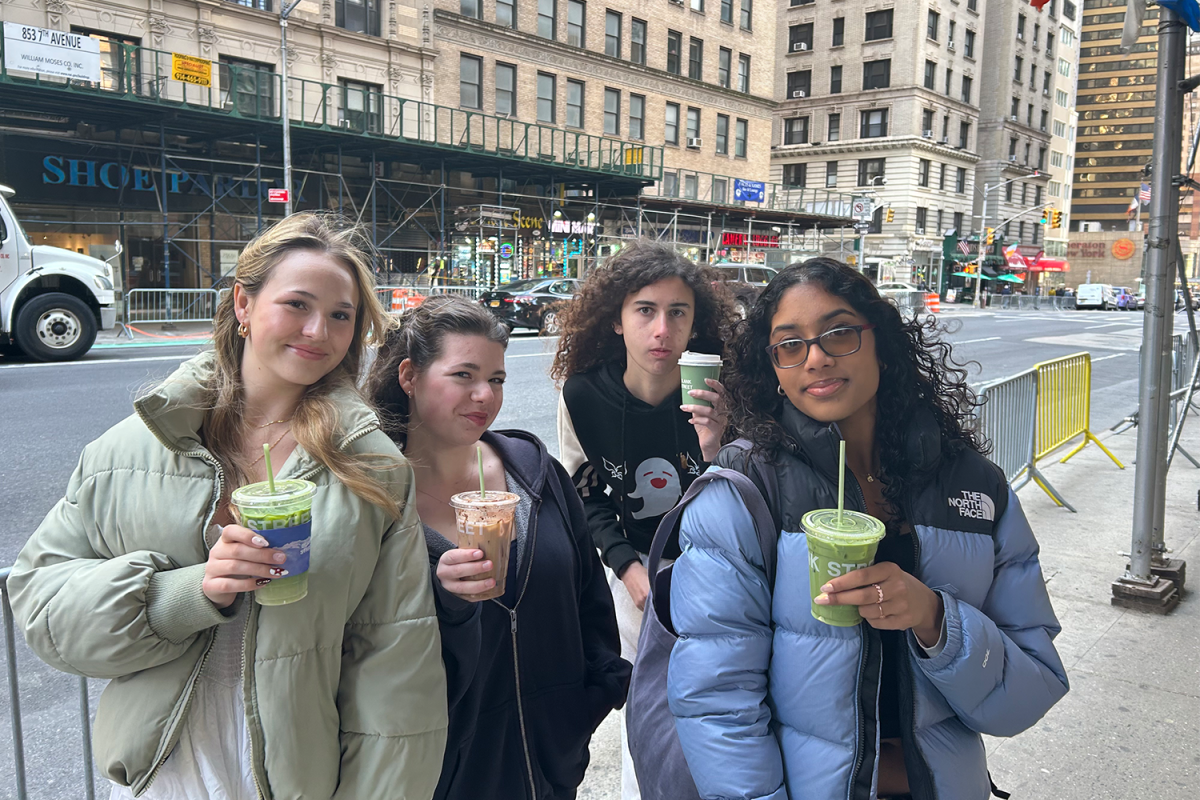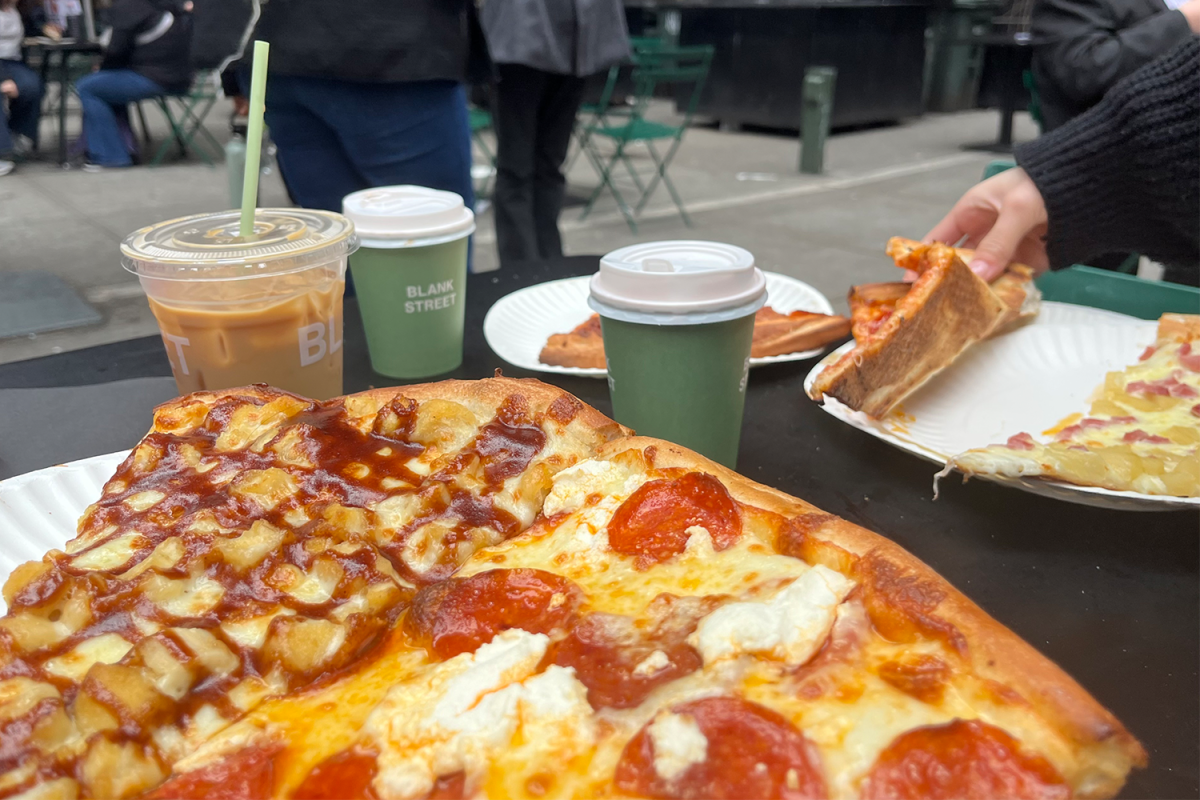A deep red-colored felt sign imprinted with “Wat Buddhapradeep” hangs across the canary yellow painted walls of the house. An array of vibrant green, orange, and yellow desserts displayed on the table catch one’s eye when stepping into the temple’s courtyard. She orders the green curry, which ignites memories of her childhood and home upon the first bite. Over the next 10 years, visiting the Sunday food markets would be integrated into her weekly routine.
Nattakarn Scripetch, a regular customer at Wat Buddhapradeep, first started coming to the temple after yearning for authentic Thai food upon moving to San Francisco. She began regularly attending the food markets and eventually started volunteering at the temple.
“The first time I came to eat the food was over 10 years ago, and I started volunteering five years ago. When I first came, I didn’t really know how to cook, and I was craving some authentic Thai food. I started going to many Thai temples around the Bay Area. Then, someone recommended that I come to this temple since it was closer to my house,” Scripetch said.
Wat Buddhapradeep first started in 1993 in Millbrae, California, out of a desire to build a community that reminded the founders of their home. In an attempt to grow their temple, the founders started by advertising their temple through local news channels. Since then, the temple has relocated to San Bruno.
“We started with the intent to build a temple in this city, in our new home. In the beginning, we talked with reporters from local news channels to get our names out there.” Sitthiporn Mitwichian, the abbot of the temple, said. “I also started posting meditations on TV, and after that, many people knew about it and started coming to our temple. At that time, we started with 40 people, and it just continued growing.”
When the temple needed to earn financial revenue to support the temple’s basic expenses and utilities, the temple started hosting Saturday and Sunday food markets with the help of volunteer chefs in hopes of increasing revenue.
“In Thai culture, food is really important, and it is also important to have food with family and friends. Thai cuisine is also pretty popular amongst the general public, so we decided to hold these food markets to attract people. The money raised from the food isn’t for business, but all of the revenue goes towards supporting the temple and donations,” Mitwichian said.
Thanakron Nopket, a monk at the temple and the primary chef, aims to create dishes that are healthy yet enjoyable for customers.
“When I cook the food, I want the person to enjoy the food. Secondly, I want the food to be healthy. I really do prioritize this and make sure that I would personally be happy to consume the food I am serving,” Nopket said.
The high quality of these dishes is apparent to customers, including Scripetch.
“I think all the dishes here are delicious. You really can’t find this quality or authenticity outside. Also, you really know that the ingredients are good and what goes into the dishes, unlike many other restaurants,” Scripetch said.
Nopket first began his cooking journey ten years ago when given an opportunity to learn from another volunteer in the temple who was known for her Thai desserts. From then on, his interest in Thai cuisine grew and he strove to master his cooking abilities through YouTube videos, cookbooks, and continually learning from others.
“I am a monk here, and so I wanted to help raise donations in support of the temple. I started by learning from the people who knew how to cook here. One of the grandmas is really good at making desserts, and she used to help make desserts for the food markets. Since she was getting older, someone had to take over to continue on the legacy. She ended up teaching me, and from there, I started cooking and helping the temple until now,” Nopket said.
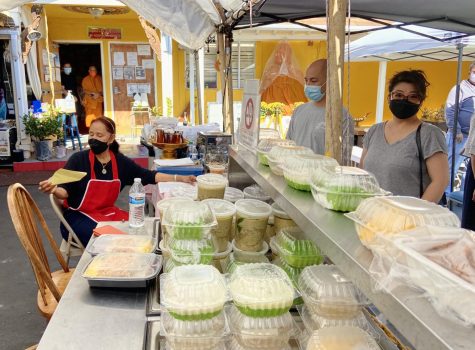
The dishes produced every week depends on the ingredients available as well as the customer’s wishes.
“To decide what I want to cook that day, I look at the market. Some dishes will be made every week due to high demand, such as pad thai, green curry, pad kra pow, fried rice, and so forth,” Nopket said. “Other dishes will be rotated weekly so that people don’t get bored, and also customers can request a dish, and I will make it if I know how to.”
Although the delectable food is a critical component of the success of the food market, the welcoming atmosphere is what attracts customers back. For Scriptech, the warmth of the environment is what motivated her to constantly return. Over the past 10 years, she has created a community that she considers her family at the temple.
“People come for the food. People come back because of the food and the warmth of the place. Everyone is super welcoming and super nice, the food is very enjoyable, and you also enjoy the people around you. You really can’t find any place like this, and it feels like you are sitting down to eat with your family,” Scripetch said.

